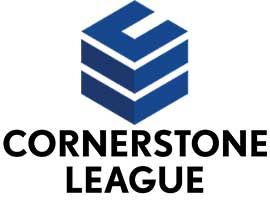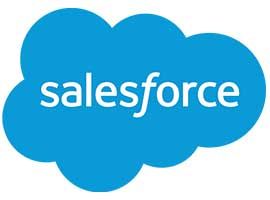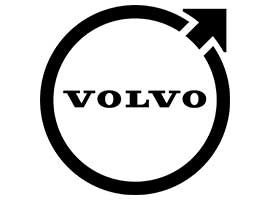
How Does Talent F.A.I.R.Play Help Retain Employees?
Do you offer flexible hours and locations?
Does your team understand their level of autonomy and initiative?
Are your managers making their individual team members feel included?
Have you readied your staff for growth, development, and advancement?
If you answered “no” to one or more of these questions then you aren’t meeting the organizational culture expectations of today’s workforce.
More than likely you may be struggling to keep that talent you spent time and money acquiring and training.
During an interactive “no death by PowerPoint” workshop, key business leaders in the Santa Ana, California area discussed ways to infuse cohesion into their cultures and what it means to adopt the "Talent FAIRplay" option. This playful acronym reflects four things that keeps employees staying at an organization. Some of you may remember that blog post titled "F.A.I.R. Play for Talent" first published in May 2023.
Flexible hours and location.
Gone are the days when employees want to come into a fixed office space and spend 8+ hours per day. Even if your organization cannot or does not choose to offer a "remote" option, be sure to consider how you can adopt flexibility into how, when, and where work can be done.
Effective leaders with a "flexible hours" mindset will focus on the work and the quality of it. Meaning if the work could be done in 5 hours instead of 8, then it's a win-win for both the employee and the company. These leaders do not spend time thinking of other work that can be done for the remaining 3 hours. Setting this type of thinking in motion only reduces productivity because employees will learn to spread out the 5 hours to 8 the next time and that "extra" work will become non-existent.
Autonomy and Initiative.
Employees want to know their levels of accountability and how far they can go to initiate and make work decisions. The following questions will get you started.
- Does the employee have a budget?
- What resources can they access?
- Is there some level of support coming from another area?
- Should the employee activate an idea or do they need to discuss it with the boss first?
Inclusion.
People want to be included. In fact, the first strategic element of cohesion is belonging. It's not enough to have an invitation to work or an event. The person needs to feel they are part of it. They want to be asked their opinion. People look for information to come to them without having to prompt for it. AND, employees seek to be part of a solution.
Readiness.
Did you know that 71% of all employees, that's two-thirds of ALL employees not just those recently hired, seek growth, development, and advancement? It's not that these folks are looking to take over the company. They desire to be ready for the next opportunity that may come their way. If organizations do not offer career counseling and a clear career path, then it may be more difficult to retain employees for the long haul.
Cohesion is a causal phenomenon.
When belonging, value, and shared commitment are present, the team performs. AND, their performance brings forth a level of employee engagement that can best be explained as being helpful, active, vested, and eager.
- Helpful (assisting other employees with assignments or transfer of knowledge without being prompted to do so.)
- Active (proactively looking for solutions to needs and offering recommendations for products and services.)
- Vested (understands the vision of the company and works towards that vision for both personal and professional gain.)
- Eager (seeks to learn new knowledge that can be put in place. This extends to the individual's level of learning as well as moving the company forward through the introduction of new practices and philosophies of growth.)
COHESION = PERFORMANCE = ENGAGEMENT
Four cohesion-infused takeaways that are real:
- Reset each day. Cohesion Huddle (CH) is a 2 to 3-minute team gathering occurring before the work day starts. The primary objective is to focus on the individual and set or reset the tone for the day. A CH does not focus on tasks. If it did then it would be a task huddle or a production meeting. I recommend to conduct these meetings at a separate time. Furthermore, it is a good practice to conduct a CH prior to the start of each work day; however, depending on the nature of the work, it is acceptable to do less, but at least one a week.
- Engage and On-board new employees. On-boarding is not just an HR function. It requires participation at the leadership level. Successful on-boarding experiences build a sense of inclusion before, during, and after the initial program is completed. They contribute significantly to the organizational culture and the ability to retain employees. A robust on-boarding program has three phases: Culture Introduction (from offer to first day), Culture Immersion (from first day to 180 days), and Culture Infusion (from 181 and beyond). Through this three phase approach, the organization is demonstrating the first strategic element of cohesion referred to as "Belonging."
- Assess the end of each day. Retention Debriefs (RD) check the temperature of how each employee feels about the work for the day. According to research, how people feel at the end of the day is most likely how they will begin the next one. RDs are excellent ways to ensure that employees are leaving on good terms and it gives the leader an opportunity to assess burnout/stress levels without a lot of complicated systems or surveys. Touch bases may occur before the employee leaves, or first-thing the next morning BEFORE the huddle. Unlike Cohesion Huddles that brings everyone together at the same time, a Retention Debrief is a very brief touch base conducted one-on-one.
- Link the relationship between supervisor and contributor. Middle level management (VPs, Directors, Supervisors, Team Leads) need training to create and sustain good working relationships with staff. The most important relationship within any company is that between the supervisor and the contributor. It is even more important today with the introduction of remote work. Understanding how to tap into an individual’s purpose and tie their passion to the work is paramount to establishing value. This value manifests itself through "meaningful work."
For more information on the Talent FAIRplay option and the four cohesion-infused activities: Onboarding, Supervisory training, Cohesion Huddles and Retention Debriefs, reach out to Dr. Troy at https://DrTroyHall.com/connect.
Fostering a cohesive organizational culture is crucial in meeting the expectations of today's workforce. If you found the insights shared in this newsletter valuable and wish to delve deeper into building a culture of cohesion that retains employees, I invite you to download my book, Cohesion Culture™: Proven Principles to Retain Your Top. This book expands on the principles discussed here and provides actionable strategies for implementing the "Talent FAIRplay" option.
To access your free copy of the "Cohesion Culture" book, simply click on the link below:
For more insight on this topic, please refer to these blog posts:
For leadership principles that can be applied today, click here to subscribe to Cohesion Corner™ with Dr. Troy!
Interested in reading more from Dr. Troy Hall? Check out my books available for purchase on Amazon.






